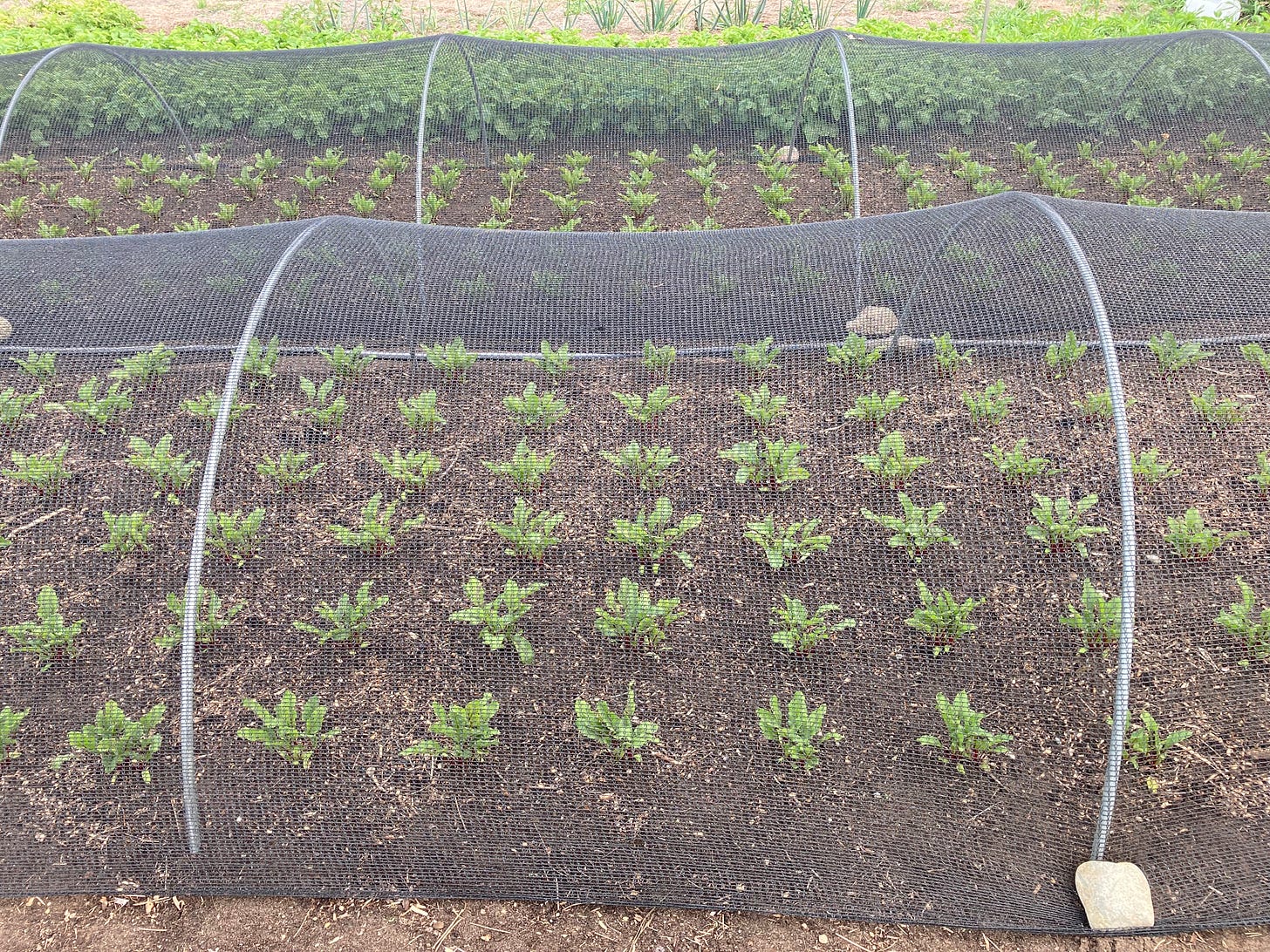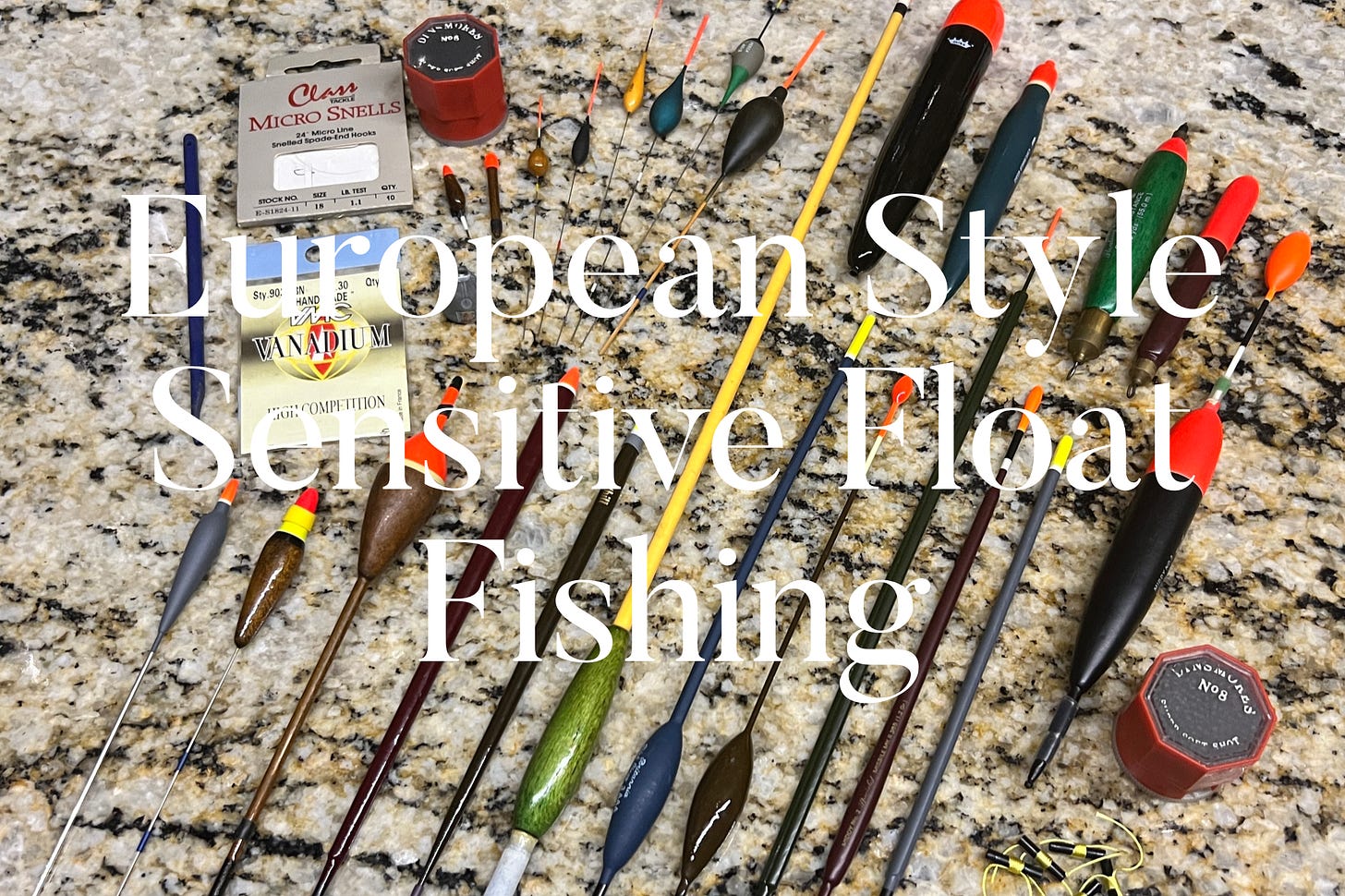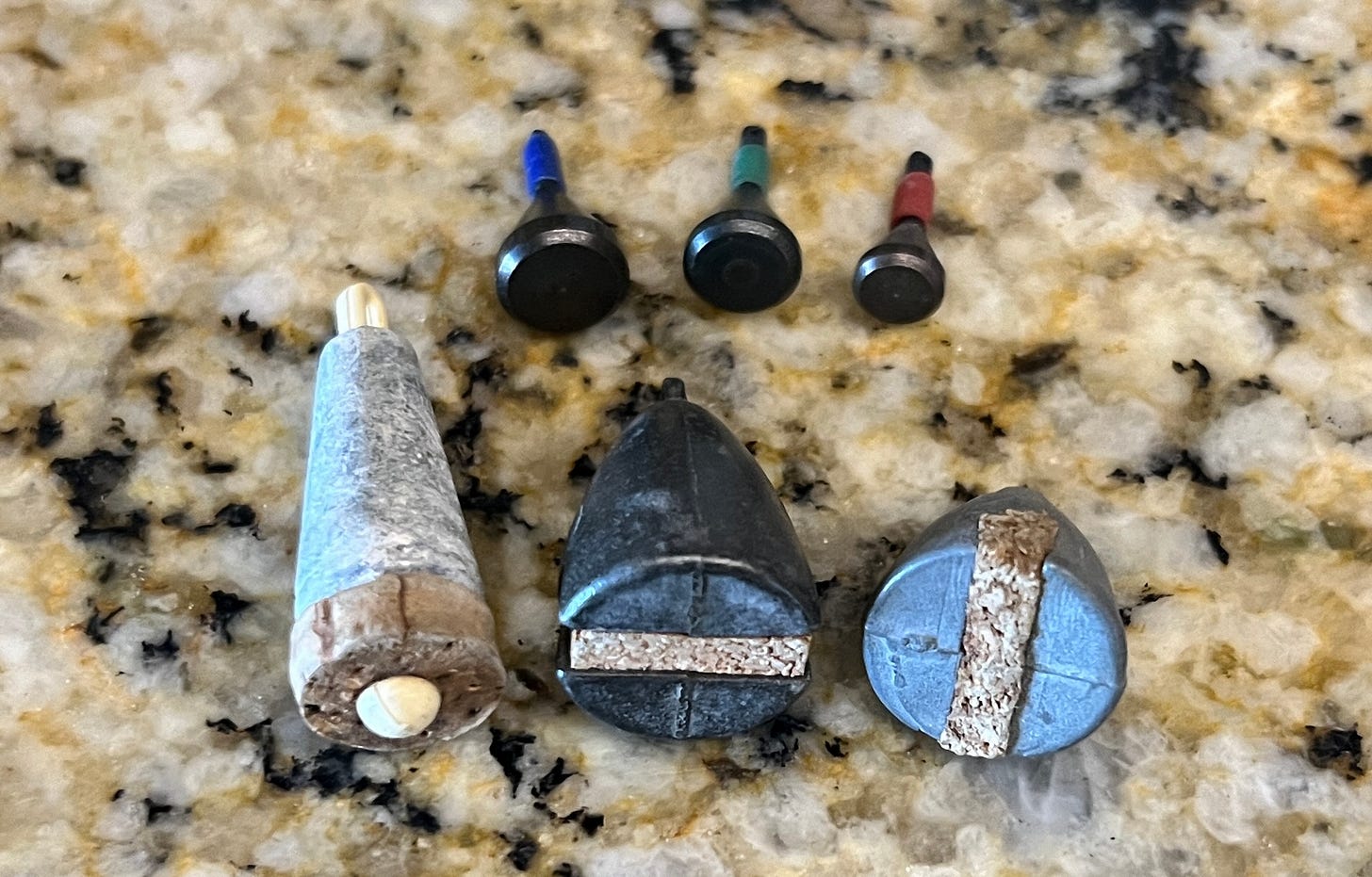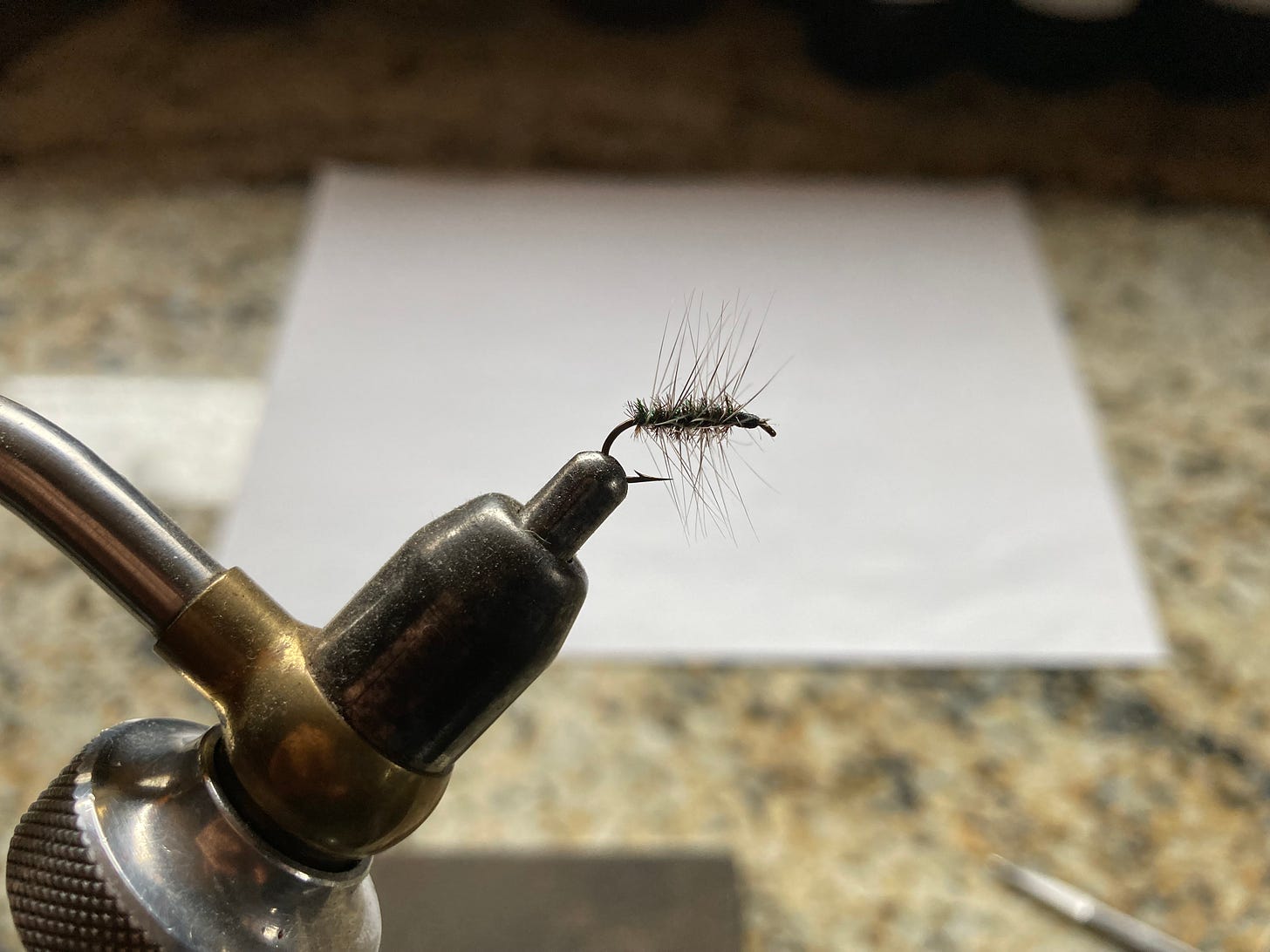February 24th, 2024 Issue
Season Extension #3 Shade Cloth / Water Soluble Calcium Phosphate- WCP / Young Beech Leaves / Float Fishing Lesson #21- Plummets / Fly Tying Lesson #21- Griffith Gnat
Season Extension #3 Shade Cloth
When most people think about season extension, it is usually in the context of growing earlier in the spring, or later into the winter. Before we get into those types of strategies, I want to address the idea of extending the spring plantings into the summer. I want to address this because I am seeing a very warm spring starting to shape up, in our area of the country.
Quite a few years ago we had a winter that was very warm, just like this winter has been for us in Michigan. It was like the perfect maple syrup weather, all winter. Fourties’ during the day and twenties at night. Very unusual for northern Michigan during January and February. When March came that year it was very warm, in fact we even had a day in the nineties. For those in Florida, a HOT day for us in March would be like sixties or seventies. The nineties shattered every record.
I had tomato plants under special tunnels, to protect them from the typical cold, that I had to cover with shade cloth to cool them down. If tomato plants experience temperatures in the nineties, the flowers will not pollinate properly. The flowers don’t need insects, they are perfect flowers, that can pollinate themselves. But in excessive heat, the pollen will not discharge within the flower properly, and the flower will abort and fall from the truss. You can shake the flowers during these hot spells and will help quite a bit. I will use shade cloth over a summer greenhouse if there are tomatoes in there, for that reason. A 30% shade is perfect.
But just in ordinary years, if you want to extend that harvest of spinach or lettuce, into the heat of summer, without it bolting as quickly and going to seed. Being preemptive with some hoops and shade cloth can make a big difference.
In the photo below, I have a commercial planting of beets that were transplanted to beds in hot weather in late July. Keeping these cool loving plants well watered and shaded really helps them to not only handle the heat while they are young and vulnerable, but helps them thrive.
As you are doing your garden planning, think through what kinds of plants you are wanting to grow, that may benefit from having a bit of shade when things get hot. Or consider having it on hand, just in case this spring throws us another curve ball.
The Regenerative Homestead Newsletter’s Main Index
This link will take you to a full Index, of all the articles that I have published, organized by topic. Making it very easy for you to go back, and revisit an article that you wanted to review again in the future.
I published this article in a separate newsletter last Tuesday. This link will take you to that newsletter.
If you know someone, that you think would enjoy this newsletter, please let them know by sharing it. Thank you!
Water Soluble Calcium Phosphate- WCP
In order for us to make a calcium spray, that also has phosphate present, we will be using Biochared bones, from large ruminates, like cow, deer, and elk. If you are coming to this lesson without seeing the last two posts, then you will want to go back and see them, so you will fully understand what I am talking about.
You will be taking the bones and breaking them into smaller pieces. It is harder to get a good 1:10 ratio (I made a mistake when I did the last post on WCA, the ratio is 1:10, not 1:9. I changed it in the post, but your emails will remain wrong) if you put the bones in the jar first, like we did with the eggshell. I would suggest that you fill your jar first 10/11ths of the way with brown rice vinegar (BRV), then place your small pieces of bones into the jar, to bring the liquid to the proper height. You will let this sit for a full week. Then strain off the liquid.
As I go into using this in a foliar, I will explain why sometimes we will want the extra phosphate, as the plant goes through a special time in its development. Once again, if you missed the video series I made on making the Biochar and these preps then this link will take you to them.
https://rumble.com/user/Schaafcraig?q=biochar
Young Beech Leaves
Beech leaves are a fun early spring wild edible that has a fairly short window in which to gather them. They are tender and nice in a salad just after they have emerged in the spring. In our forest, the different trees tend to go at different times, so for a couple of weeks I can usually find some nice young tender ones available. It would be Interesting to have them tested for minerals, because the trees are moving so many minerals to their early leaves as they are developing so rapidly. If you pay attention you would be shocked how fast they develop.
Float Fishing Lesson #21- Plummets
A plummet is a heavy weight that is put on the end of ones fishing line to help define not only the depth of the water, but also the material that the bottom consists of.
One of the most remarkable memories I have of our coach, Mick Thill, was when we started to train as a fishing team on the river Inny in Ireland. He took us to a place that he had never fished before. He had us sitting on the bank behind him. As he was setting up his tackle, we had been talking with one another. Then he started to “plumb the bottom of his swim”. The river Inny is a slow river for the most part. Mick had put a plummet on the end of his line that allowed him to drift his float through the swim. The “swim” is the area available to the match angler that they can fish in. I don’t remember how many times he adjusted his depth, and made drifts through the water in front of him. He was very methodical though. He had learned to use a plummet to paint a picture for him of the entire bottom of the river in front of him. He knew where all the depth changes were and all the structure, that might hold fish. As he continued to make different runs at different depths, he was also chumming ground bait and maggots. When He had finished running his plummet, he turned to us to make sure he had our attention. He removed his plummet and proceeded to put on his line the necessary weight in split shot, same weight as the plummet, and maggots on his hook. He made his cast, mended his line for a good drift, then turned to face us as his float drifted through the swim. We were astonished that he was looking at us instead of his float. The float showed an indication (bite) and he set the hook at that precise moment. We were spell bound. He had gotten our full attention! How had he known the precise moment he would receive a bite?
All that time he had been plummeting, he had been painting a picture of the entire bottom of the river. He had also been counting how long it would take for his float to drift in different parts of the swim. Before he had even put bait on his line, he had accurately determined where the fish would be and how long it would take for his bait to get to them. He was so confident with what he was doing, he knew the moment that he would need to set the hook. This man was truly one of the most gifted fisherman that the sport had ever seen. It was a great privilege to have been chosen to be under his training. After having spent time with him in Europe I came home to catch ten times as many fish as I would before going.
Here is a picture of some different kinds of European plummets. I will be sharing in the future how I use plummets in specific situations. I will also be showing you a very effective one that you can make yourself as well, that will match precisely each float your wanting to use.
Fly Tying Lesson #21- Griffith Gnat
In this lesson we tie the Griffith Gnat. This is a really good midge dry fly imitation in small sizes.
https://rumble.com/v12t3wl-fly-tying-class-lesson-21-griffith-gnat.html
















